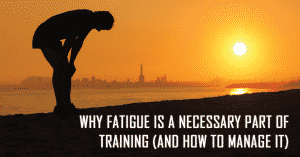There is often a stigma attached to the run walk method for beginners, also known as the galloway method, which new runners use in their training.
First time runners who are still trying to work their way up to their first race don’t feel that “real runners” respect them if they aren’t running the entire distance.
While experienced runners often shun the concept of a run walk run, even when it might be a useful training tool that even elites use through run walk intervals.
As a beginner or experienced runner, you shouldn’t be ashamed of utilizing run walk training, especially when you are racing a longer distance like the half marathon for the first time.
When implemented correctly, a run-walk program is an effective training method that can help you increase your fitness faster, recover from hard workouts quicker, and return from injury with less chance of relapse.
Sounds like a win win, right?
Here’s why:

Why is the Run Walk Method the Best for New Runners?
For beginner runners wondering: Is it better to walk or run?
The galloway style of running allows you to exercise for a longer period of time each session. This increases your aerobic capabilities more rapidly, burns more calories, and reduces your risk of injury.
Now:
Most beginner runners just need to know how to work your way up to running a mile or a 5k.
This means your time spent running is typically only 15-30 minutes per session. However, from research, we know that aerobic development peaks between 30-90 minutes of exercise.
Therefore, any way you can increase your exercise time in as a new runner will help you develop more rapidly.
This is where a run walk program for beginners comes in, it provides new runners the ability to recover their breathing and gives their muscles a rest.
This can help you extend your training sessions beyond 30 minutes while also making it less difficult on the body.
Not only does this help increase fitness (and help you lose weight faster), but it reduces the likelihood of injury as you are not stressing your body beyond its capabilities.
If you were wondering how to get yourself to run longer, this is your secret sauce.
It gets better:
Studies have shown that there is only a small difference between the number of calories burned while running easy and the number of calories burned at a brisk walk.
When you factor in the fact that the run walk method allows a runner to almost double or triple their time spent exercising, new runners are able to burn more calories than they would simply by running.
What’s the bottom line?
Walk, don’t run the whole time when you are just starting as a runner.
When (if Ever) Should I Stop Using the Run Walk Method?
Eventually, beginner runners will get to the point where they no longer need walk breaks to extend their run beyond the 30-45 minute mark.
When this happens, it’s generally better for fitness progression to run the entire way since running stresses the aerobic system to a greater degree.
Now:
As runners become more experienced, they tend to develop specific race time goals, like breaking 30 minutes for the 5k. Or maybe you want to be ready for your first 10k in 6 weeks time.
The fitter you become and the higher you set your goals, the harder you will need to train to attain them.
Reaching faster time goals will generally require running for the entire race distance. For that reason, preparing for this during training is important.
How to transition from run walk run to just running
If you have been following a 8-week run walk program for beginners, transitioning to continuous running is pretty simple.
Slowly increase your run to walk ratio each week while keeping the total time exercising the same.
Need an example?
If you’re comfortable run walking at a ratio of 6 to 4 (6 minutes running, 4 minutes walking), you can transition to 7 to 3 (7 minutes running, 3 minutes walking).
Once this feels comfortable, you can increase to 8 and 2 or 8 and 3, whichever you prefer.
When you can run 8 to 9 min run and only need 1 to 2 minute walk between, the next step is to break your run into larger run walk segments, such as 20 minute run, 2 min walk.
You might be wondering:
This is a transitional step to prevent injury so you don’t immediately go from run walk to 60 minutes of running.
One more thing:
I also recommend keeping one longer run as a run walk for three to four weeks as you transition to running only.
This will enable you to increase your long run distance and tolerance without placing additional stress on your structural system (muscle, ligaments, tendons and bones).
How Does the Run Walk Method Help Experienced Runners?
Many experienced runners are too stubborn or proud to see the value in the run walk method at certain times in their training.
However, when used effectively, it can be smart way to enhance recovery and prevent injury.
Recover from injury faster
I recommend that all runners returning from a difficult injury use the run walk method of training.
If you had to stop running for more than two weeks or the injury is particularly troublesome, the run walk method can prevent re-injury and help you transition back to normal training faster.
You might be wondering:
Why should I use this beginner training when I can build myself back up quickly?
My body is used to running, and besides, I need to get my fitness back quickly.
Here’s the deal:
When returning from a difficult or persistent injury, the injured area is likely to be sensitive and prone to re-injury.
Most of us are pretty hesitant to stop when we are in pain running, so we tend to compensate for weaknesses or pain by limping or firing other muscle groups to take pressure off the injured area – often without realizing it. Brad Beer explains which pains we should run through and when to stop running in this podcast interview.
You could potentially be stressing other areas of your body to compensate and set off a chain of injuries.
Not ideal.
Implementing a run walk will help take pressure off your structural system while enabling you to get out and run for a greater total time while transitioning back to normal training.
Recover from running faster
I have also found the run walk method is helpful in reducing soreness and injury potential after hard workouts.
Most runners are mileage hounds, even when we’re well-aware that the purpose of a recovery run is to help our bodies recover from those hard workouts.
Stubbornly, most of us will continue with the distance scheduled for the day, regardless of how tired it’s making us.
Guilty?
Me too.
I know I have felt absolutely trashed during a recovery day, yet didn’t back off the distance.
Implementing a run walk, even if it’s as simple as 1 minute break every 10-15 minutes, can dramatically reduce the stress on your structural system and help keep a recovery run a real recovery run.
Sure, it’s a hit to the ego.
But, I’ll bruise my ego a little by using the run walk on a recovery run, if it means I can workout harder and race faster down the road.
Oh and one more thing:
Actually, we have found that neuromuscular fitness could be the secret to improving pace without adding more miles.
What’s the bottom line?
As with any specific training method, learn to think creatively rather than listening to those who only see one way of accomplishing a goal.
When used correctly, the run walk method can be an critical tool in the hands of both beginner and experienced runners alike.




2 Responses
At 54 I got injured after 3 1/2 years of running and started the run/walk method. Easy and first then gradually building up to a 3:00 run :45 walk and haven’t looked back. I feel better. and maxed out at 16 miles in February and did back to back (Saturday/Sunday) marathons in March. I am training for a 50K and won’t go farther than 18 miles in a day, or 40 miles in a week before that one. I wasn’t a believer until now and have met many others using this method, some ran/walked 3:17 marathons (too fast for me, but impressive).
It has worked for me!!
I’ve been debating how to utilize the run/walk method in planning a pace for my first full marathon. I tried running 4 miles, then walking 5 minutes and did this until I reached 18 miles. My running was at a pace equal to the slow end of my prescribed pace (i.e., I ran 12:20/mile for a prescribed pace of 11:30 to 12:20). I was pretty exhausted but did exceed my earlier limit of 16 miles (couldn’t make it to the prescribed 17 miles), so I was pleased with the outcome. Still, how do I determine the best method/ratio for reaching 26.2 miles?